There are many times when excessive rain leads to rotting roots in the most beautiful of gardens. And while water is the source of life, excess of it will inevitably harm your house.
So, if you live in an area where rain or flooding is a huge problem, consider getting some French drains. This will keep your house, as well as your lawn, safe and fresh.
The perforated pipes are the reason why a French drain, despite sounding very complicated, is very simple. The perforated pipe for drainage will solve every water-related problem of yours, be it a flooded basement or a pool of mud. Installing this wonderful piece of plumbing is easy as well; you just have to know what to do.
And in this article, we explain the 9 steps you have to follow to have your French drain ready to use.
How to Install Perforated Pipe for Drainage
What is a French Drain?
The function of a French drain is to make sure you do not have water pooled anywhere around your house. It drains the excess water and diverts it to an endpoint like the curbside or the municipal drain. The perforated pipe for drainage use in the system draws water from the ground and makes it flow downhill.
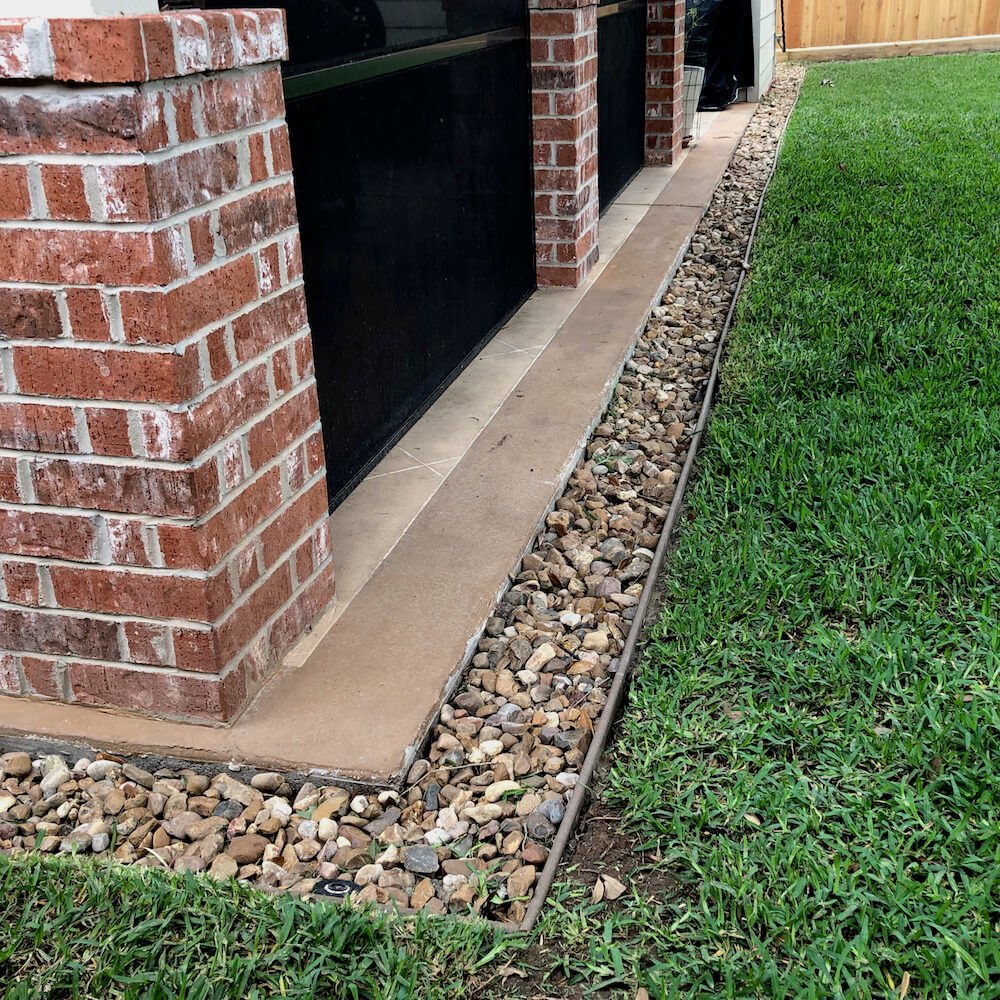
The water gets drained through the rocks and gravel as it reaches the pipe, making the entire path easy. As it flows away from your house, the angle of the slope becomes important. This sub-surface solution allows the water to seep away from the ground as it gets carried away.
Materials Required to Install a Perforated Pipe French Drain
You will not need many tools and materials to install a perforated pipe for drainage. Here is a comprehensive list of everything you might need.
1. Map out The Exact Location
The main aim of installing a French drain is to keep the water off your lawn. You do not want rotted roots, but where do you want the excess water to go? The perforated pipe for drainage will collect the water for you. But you need to decide where it should be installed and where it will end.
The first thing to remember is that the dig site should be on a downhill slope. The area which is to be dug up should be marked properly with some landscaping paint. Find out the most problematic areas in your lawn where the water seems to pool the most. Start from there, and make sure the foot traffic is not too high in the region under which the pipe goes.
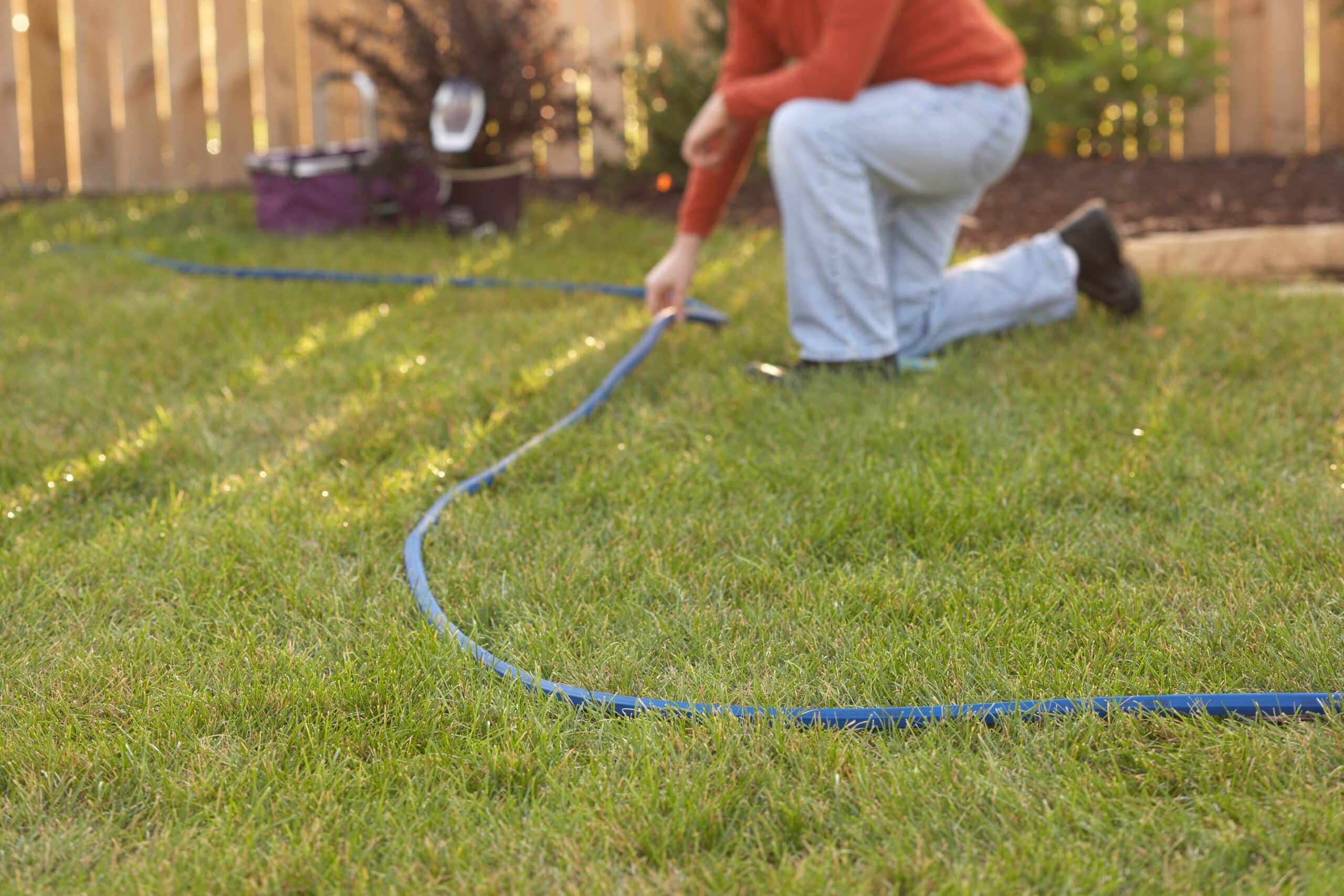
The exit point of your French drain depends on what you want to do with the water you have collected. It cannot be let off into your neighbor’s lawn or the road, as it should be disposed of carefully. You can either connect it to a municipal storm drain, or you can put it to good use. Most commonly, a French drain leads to a dry well 30-70 feet deep. You can also collect it into a rain barrel or have a rain garden ready to soak up the excess water.
2. Dig a Trench
After you have carefully marked the exact path your drain would take, the next step is to prepare the ground. A perforated pipe for drainage does not remain aboveground. It is buried deep into your lawn. And for that, you need to dig a trench that is much wider than the width of your pipe.
French drains need specific measurements when it comes to digging the trench. The pipe would need to be nestled in the soil that is at least 18 inches deep, that too at the shallowest point. It should also be about 9-12 inches wide. Gravity would be working for you when it comes to seeping out the water, so make sure the slope is no less than 1%. That means you have to drop the pipe an inch after every 8 horizontal feet.
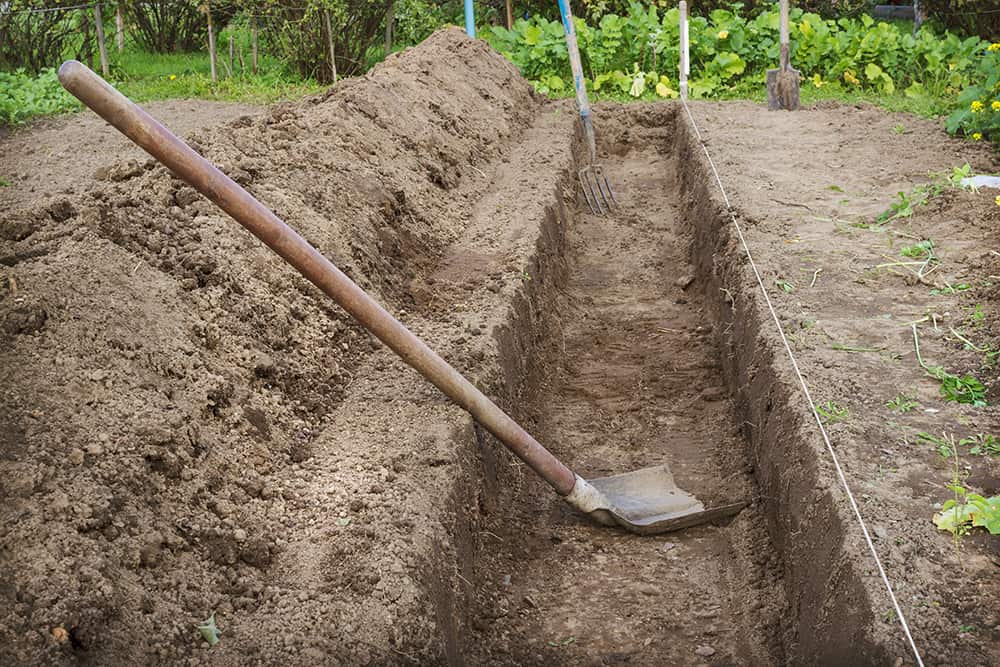
The task of digging a trench is tiring as, most likely, you would be planting a long pipe. So before taking up your shovel, consider calling up a few friends for support. With the help of a couple of people, you will be able to accomplish the task quickly. Also, remember to lay down a tarp before digging so that you can move the soil easily afterward.
3. Line the Trench
After you have made a trench big enough to fit the pipe, it needs to be prepped. And the first that you will need is landscape fabric to line the soil. This material is known by many other names, such as geotextile fabric, garden fabric, weed block fabric, and weed barrier fabric. But its main job is to protect your pipe from natural elements.
The perforated pipe for drainage is full of holes, so roots and plant tendrils can easily make their way inside it. This will jam the insides and ruin all your hard work. But the landscape fabric is the armor that protects the pipe from roots but allows water to seep through it. They are usually made of linen, polyester, polypropylene, or different kinds of recycled materials and are of two types: woven and nonwoven.
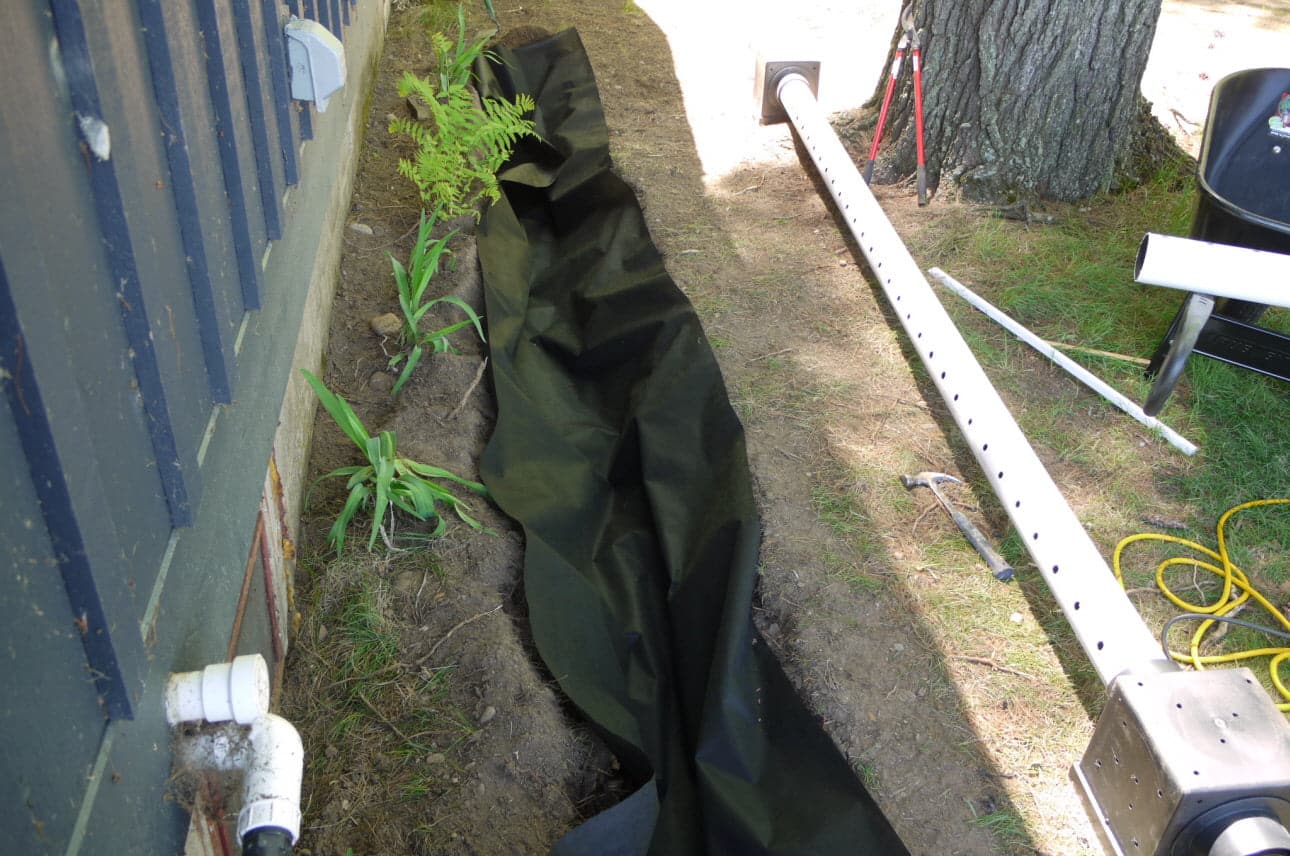
For a French drain, make sure to choose a non-woven fabric, as it allows water to pass through easily. You will also need one that is medium-weight fabric, about 4-6 ounces. This especially controls erosion. Laying down the fabric is not hard. Just make sure you have enough to cover both sides as well as the bottom of the trench.
4. Install the Gravel Bedding
After you have put down the landscape fabric, you will need to pour in the gravel. This step might become messy if you do not keep the fabric in place. So staple it down, then pour your layer of gravel on top of the fabric. The gravel is the key element in the installation of the perforated pipe for drainage. It will allow the water to filter down to the pipes as well as improve drainage.
While pouring the gravel, take measures so that your layer is about 3 inches deep into the fabric. The size of the gravel is also important, as the wrong ones may harm the pipe and clog the drain. Pea gravel and crushed rocks are strictly avoided when choosing gravel. Instead, round, washed ones that are ½-1 inch thich are chosen.

The amount of gravel you need will depend on how big your drain is going to be. Gravel is usually sold in cubic feet, so calculate the amount by multiplying the length, width, and depth of your trench. If you find gravel that comes in pounds, remember that 1 cubic root is equal to 96 pounds, and calculate accordingly. For example, 7.5 cubic feet of drainage will require 720 pounds of gravel.
5. Hook the Pipe Connections
Installing a perforated pipe for drainage for your French drains means making it a big one. You do not want to drain only one area and keep the rest of it flooded. So you are sure to need some pipe connectors. The drainage system in people’s houses varies according to the size of the house as well as the layout. But pipes are not made for custom sizes.
The path your French drain follows also will not be a straight line. As the pipe is a couple of inches below the surface, it may get damaged if there is heavy traffic. So the route will be winded, but you can still see when the pipe will bend or connect to another. In those places, you can either use a connector or an inlet grate.
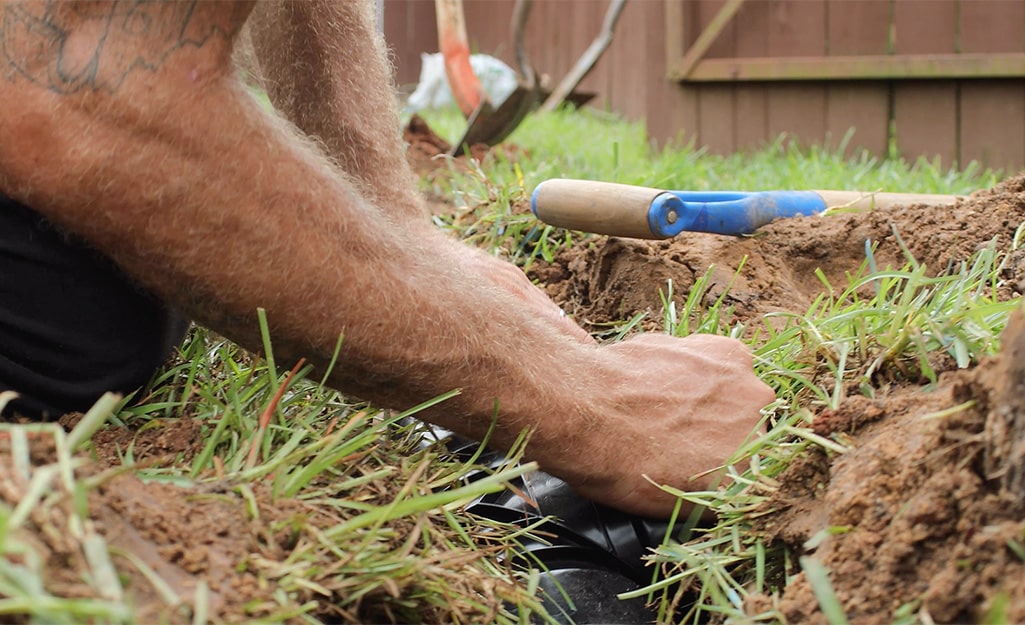
The number of inlet grates you install will depend on how much water logging your lawn sees. They should be at those points where water pools the most. The connectors and inlet grates will not affect the performance of your pipes; they will merely facilitate drainage.
6. Install the Pipe
Now comes the step without which your new drainage system would not exist. The step of installing a perforated pipe for drainage so that there will be no leaky sprouts during heavy rainfalls. The perforated pipes are solely chosen for the reason as they will allow water to seep gently. So that the process will not get messy before it gets collected at the end.
After you have prepared the soil and laid down the necessary ingredients, the installation will be easy. Take your pipe and gently nestle it between the gravel with the holes facing downwards. Otherwise, the topsoil and gravel may clog those perforations, and you will have a regular old pipe as a result.
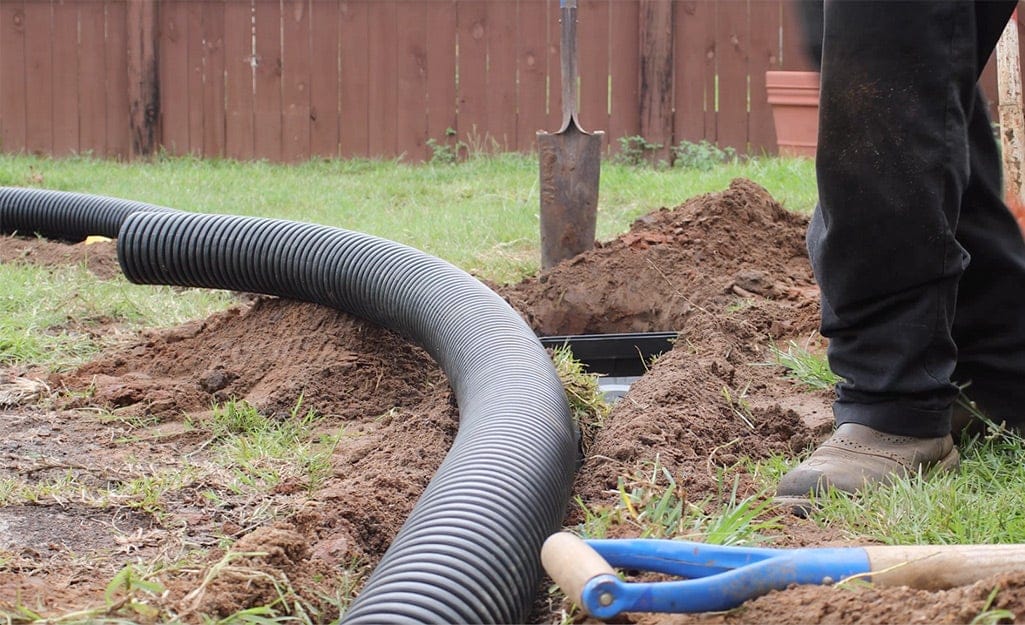
The choice of pipe depends on your preference, but for a French drain, we recommend one with a 4-inch diameter. Smaller pipes run the risk of clogs, so it is better to be safe than sorry. There are also many different Polyethylene or corrugated pipes available in the market. But we would suggest rigid PVC as they are highly crush resistant. Pre-perforated pipes are available, but you can also cut holes yourself; just make sure they zigzag and are 2 inches apart.
7. Cover with Gravel, Then the Fabric
After you have laid down the pipe, all that is left is to cover it up. The first thing that is to go over the exposed pipe is gravel. But before sealing it off, test the flow of the pipe by pouring water from the inlet grate. If it does gown smoothly, you will have achieved what you set out to do.
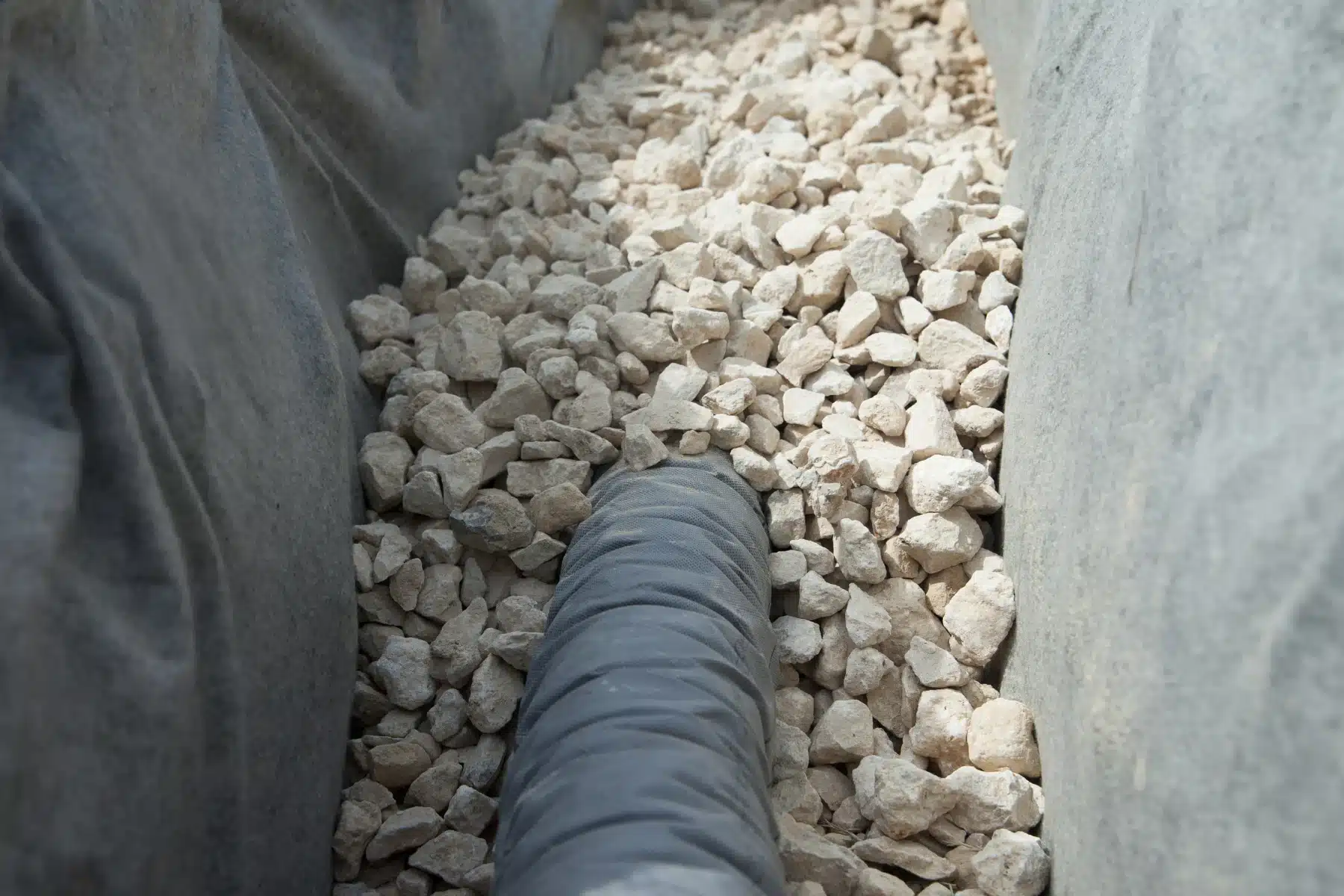
Once you are satisfied with the result, add about 3 inches of gravel above the pipe. It should hide the surface completely, but make sure the layer does not cross the ground level. After your perforated pipe for drainage has been covered with the stones, drape the excess landscape fabric over it. This twofold protection will keep your system safe and functioning for years to come.
8. Add the Top Soil
Many people prefer to mark the path of the drain with gravel so that people know where not to step. Many options provide the distinction like crushed rocks or colored pebbles of different sizes to resemble a dry stream. But one of the biggest benefits of using perforated pipe for drainage is its absence aboveground. So, to keep your lawn green and without a sign of the underground pipes, put a layer of soil above your landscape fabric.
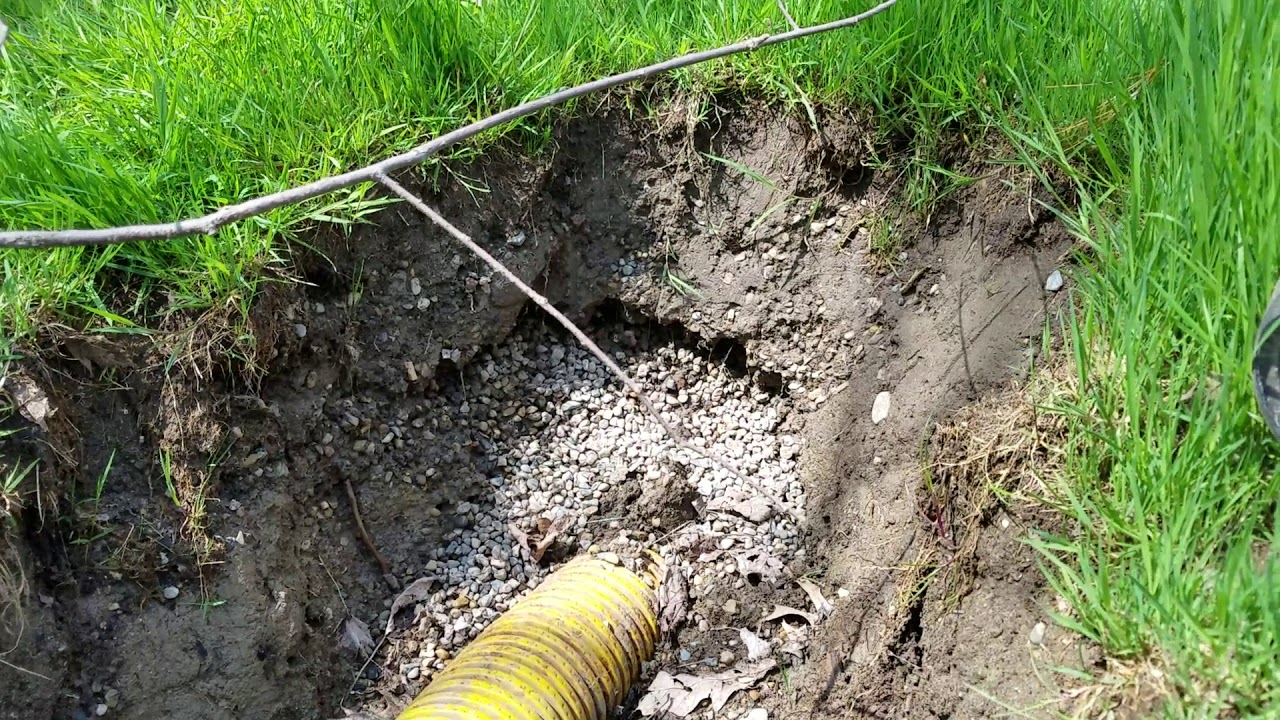
As you install your French drain perfectly, you will see that the top blends seamlessly with the ground beside it. You can lay sod on top of the fabric and then reseed it with grass so that the entire lawn is covered in greenery. Some also prefer ground cover plants for their aesthetic appeal.
9. Maintain the Setup
The first thing to remember when it comes to the care and maintenance of a French drain is time. You have to change the pipes and reinstall the yard drain every 5-7 years. As landscaping shifts with time, the pipes, landscaping fabric, and even the gravel will deteriorate as they age. You may be lucky and have a system that seems to be working perfectly even after 5 years. But get to changing whenever you see water pooling where it shouldn’t.
Another maintenance point when it comes to using perforated pipe for drainage is to install it in places of low traffic. If heavy machinery like cars, tractors, or even lawnmowers go over its topsoil too often, the pipe is sure to get damaged. To avoid this, keep some indicators beside the pipes, like certain lawn decor always to remember the location.
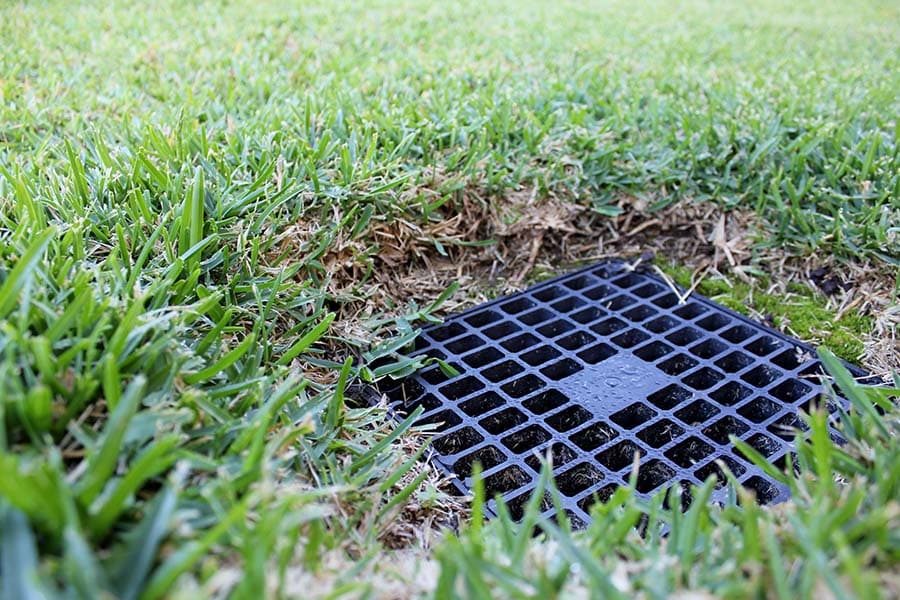
A maintenance hack often suggested by many is installing a T-pipe connector near the very end of the line. This setup will allow the water to fork off into the branch created. This is beneficial as it will be dispersed the water over a wider area. Also, remember to clean the inlet grates and outlet points frequently so that lawn debris does not clog them.
Common Mistakes While Installing Perforated Pipes
The first mistake people make when they set out to install a perforated pipe for drainage is not calling the authorities. You need to ensure that the area you have marked does not run above any dangerous stuff like power or gas lines. Make sure there are no buried utilities, then get to digging.
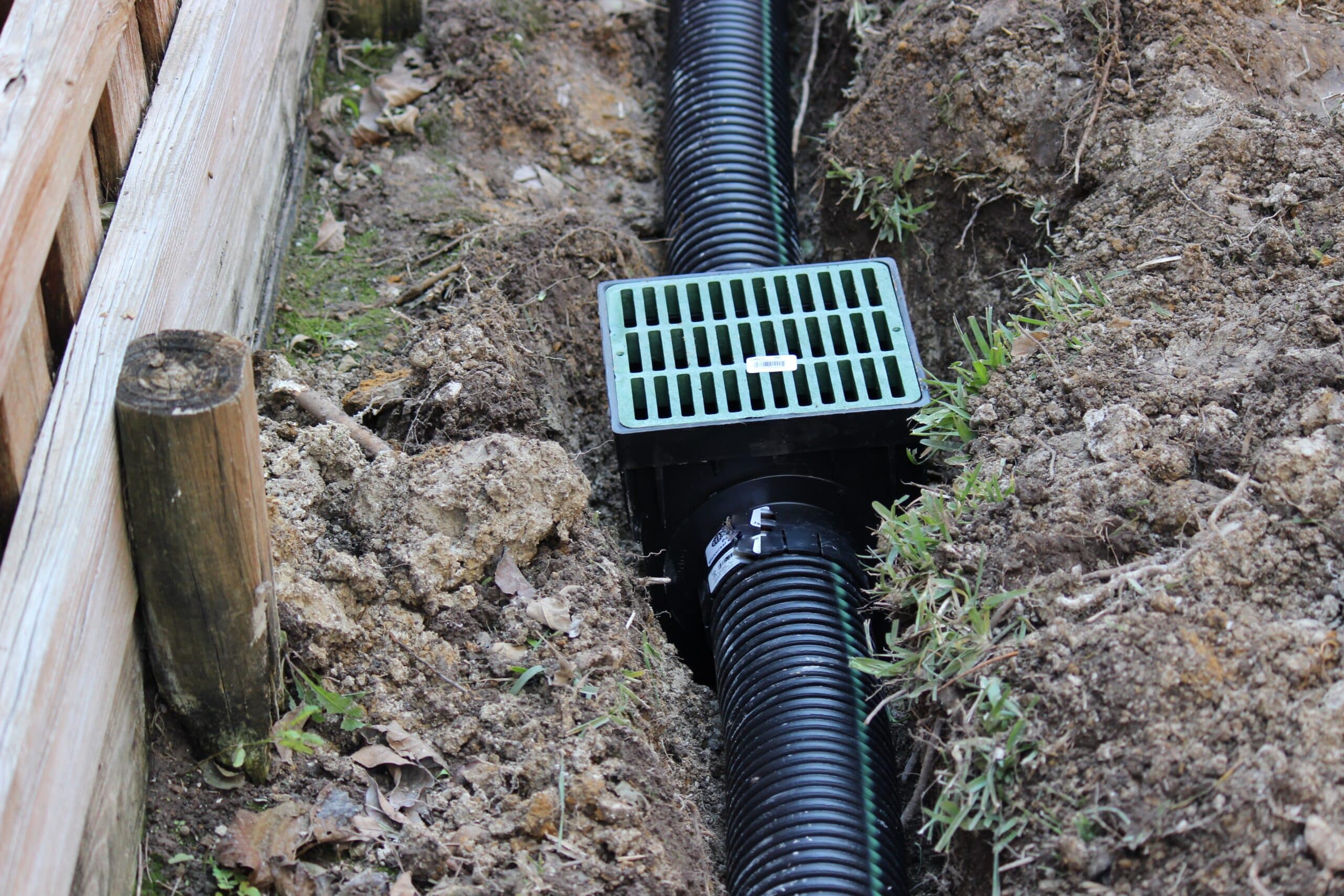
The wrong type of gravel also creates a lot of problems. And if you do not have the measurements mentioned here, do not make do with crushed rocks. You will only end up with a clogged drain. Instead, use a sock-wrapped drainpipe. This will prevent the rocks from clogging up the perforated holes. Also, make sure that you are using a good landscape lining, non-woven, so that your drain lasts for a long time.
Bottom Line
The process of installing a drain with some perforated pipe for drainage is easy as long as you understand the steps. But before that, you need to know what a French drain is and how it will transform your plumbing problems outdoors. And after you have gathered the right materials, just get to work, planning and digging.
The only hard part of the entire process is digging the trench. For a big area, you will need some help. But after the path of the pipe has been laid, most of the work is done. Putting the fabric, gravel, and pipe will not be difficult. Just follow the steps, and your French drain is sure to last you years.
But if you have any other queries, let us know in the comments below!
Frequently Asked Questions
What is the Process of Drainage?
Drainage is needed to save the ground from being waterlogged. The process of removing excess water from the ground surface is called drainage. This excess water can be the result of many things, like too much rainfall or overflowing of irrigation water. However, this water is bad for the ecosystem as it can rot the roots.
What Type of Pipe is Perforated?
Perforated pipes are constructed of a variety of different materials like PVC, cement, clay, and iron. You can choose any among them to suit your purpose. But the most popular choice is PVC, as the pipes made from it are lightweight and flexible. Just remember that in the case of perforated pipe for drainage, the number of holes and their sizes vary with each design.

